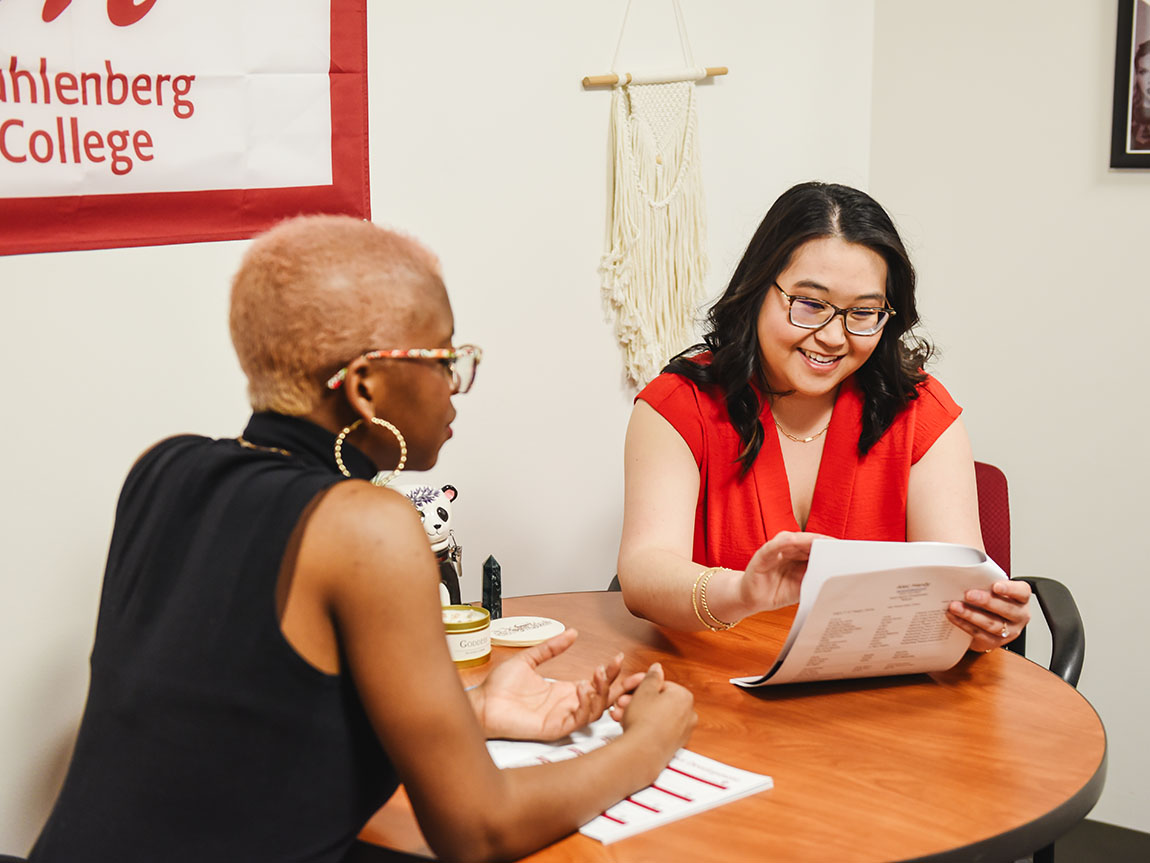Connecting With Every Student: How the Career Center Met With 100% of the Class of 2027 Last Fall
Executive Director of Career Services Sean Schofield explains the importance of reaching students early and often with personalized guidance.Wednesday, March 27, 2024 09:02 AM
 Assistant Director of Career Coaching & Education Sara Weidner meets with a student. Photo by Kristi Morris/Littlewing Photography
Assistant Director of Career Coaching & Education Sara Weidner meets with a student. Photo by Kristi Morris/Littlewing PhotographyDuring his time at Muhlenberg, Executive Director of Career Services Sean Schofield has focused on expanding the reach of the Career Center and broadening its messaging. He hoped it would come to be understood as a place that supports students from all majors and class years.
A milestone in that journey was reached last fall, when 100% of the first-year class met with a staff member from the Career Center. This happened as part of the College’s innovative coaching program, which matches each new student with a career coach and a college life coach in addition to a faculty advisor.
Here, Schofield explains the transformative nature of the early career exploration all Muhlenberg students are now completing.
Why is it important to reach students so early in their time at the College?
As a higher education professional, I recognize that four years feels a lot shorter to me than it does to students. Unfortunately, this lack of urgency can sometimes delay a student’s ability to “course correct” their path. Instead, they may fumble to change professional direction after an internship in the summer before their senior year. Career development is a process that demands engagement early and often. Its programs and interventions continually build upon themselves. It is a process of measurable short-term behaviors that lead to measurable short-term goals.
What does successful career development look like?
College career centers were once placement agencies, sending students out the door on a largely linear path toward a 30- to 40-year career and pension. Modern career centers are highly relational offices that help students examine their values and interests and connect them with powerful alumni networks. For today’s career center, success is about whether students understand their career motivations and have been appropriately challenged to seize ownership of their individualized pathways to success. Success lies not in helping students find some roadmap for success but in supporting them as they map out their own futures.
How does Muhlenberg’s Career Center support students in this process?
Our campus coaching model ensures that every student engages with the Career Center in their first semester as a Muhlenberg student. It intentionally exposes students to our Muhlenberg Action Plan (MAP), which guides career engagement through all four years of their undergraduate experience and customizes career development to address each student’s unique needs and goals.
MAP is a curriculum that individualizes each student's career development experience and, in year one, a physical booklet that they utilize to access reflection activities and schedule their goals throughout the semester. Perhaps most importantly, intentionally framing career development as an immediate process challenges students to set goals that they will work to accomplish in the coming days and weeks, not set more arbitrary wishes for the distant future.
How has the Class of 2027 benefitted from early engagement with the Career Center?
We are already noticing that as early career engagement has grown, so too has repeat engagement in career coaching appointments. First-year students are returning to our offices for second and third appointments, MAP in hand, discussing successes and failures in their short-term goals and what it means for them.
And, by engaging 100% of our first-year students, we are reaching 100% of the students who have traditionally underutilized career services. Being an intentional part of the coaching model has become the Career Center’s single most complete method for democratizing opportunity and access in our history of student engagement.
